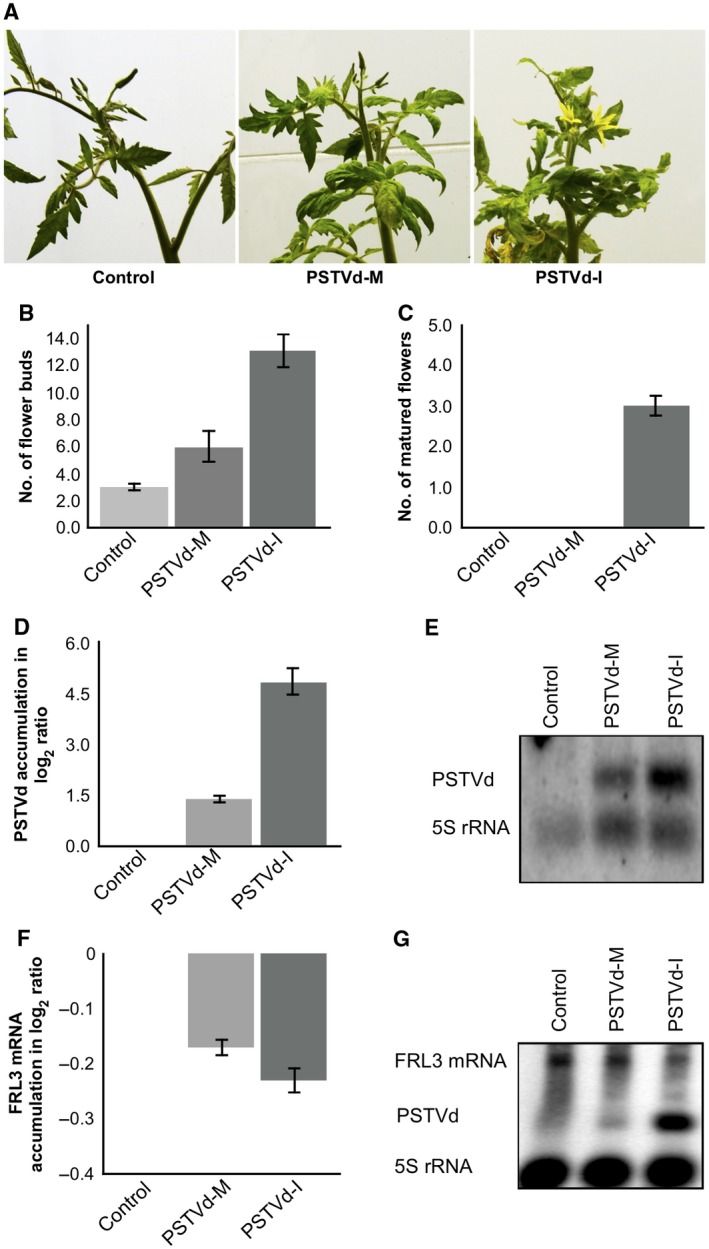Figure 2.

Potato spindle tuber viroid (PSTVd) infection induces early flowering in tomato plants. (A) The PSTVd variants PSTVd‐M (PSTVd‐Mild) and PSTVd‐I (PSTVd‐Intermediate) were inoculated into tomato plants cv. Rutgers. At 35 days post‐infection (dpi), the plants inoculated with PSTVd‐I exhibited mature flowers, whereas the PSTVd‐M‐inoculated plants showed flower buds similar to those of mock‐inoculated plants. The total number of flower buds (B) and fully opened flowers (C) observed in three separate experiments were recorded. The error bars indicate the standard deviation (SD). Total RNA extracted from tomato plants at 14 dpi was used to monitor the PSTVd titre by both reverse transcription–quantitative polymerase chain reaction (RT‐qPCR) (D) and RNA gel blot assay (E). The expression change is presented on a log2 scale. The error bars indicate the SD. The same RNA samples were used for the RT‐qPCR (F) and RNA gel blot assay (G) in order to monitor the effect of PSTVd variants on the expression level of FRIGIDA‐like protein 3 (FRL3) mRNA in tomato plants. The expression change is presented on a log2 scale. The error bars indicate the SD. Each experiment was performed at least three times with true biological replicates. [Colour figure can be viewed at wileyonlinelibrary.com]
